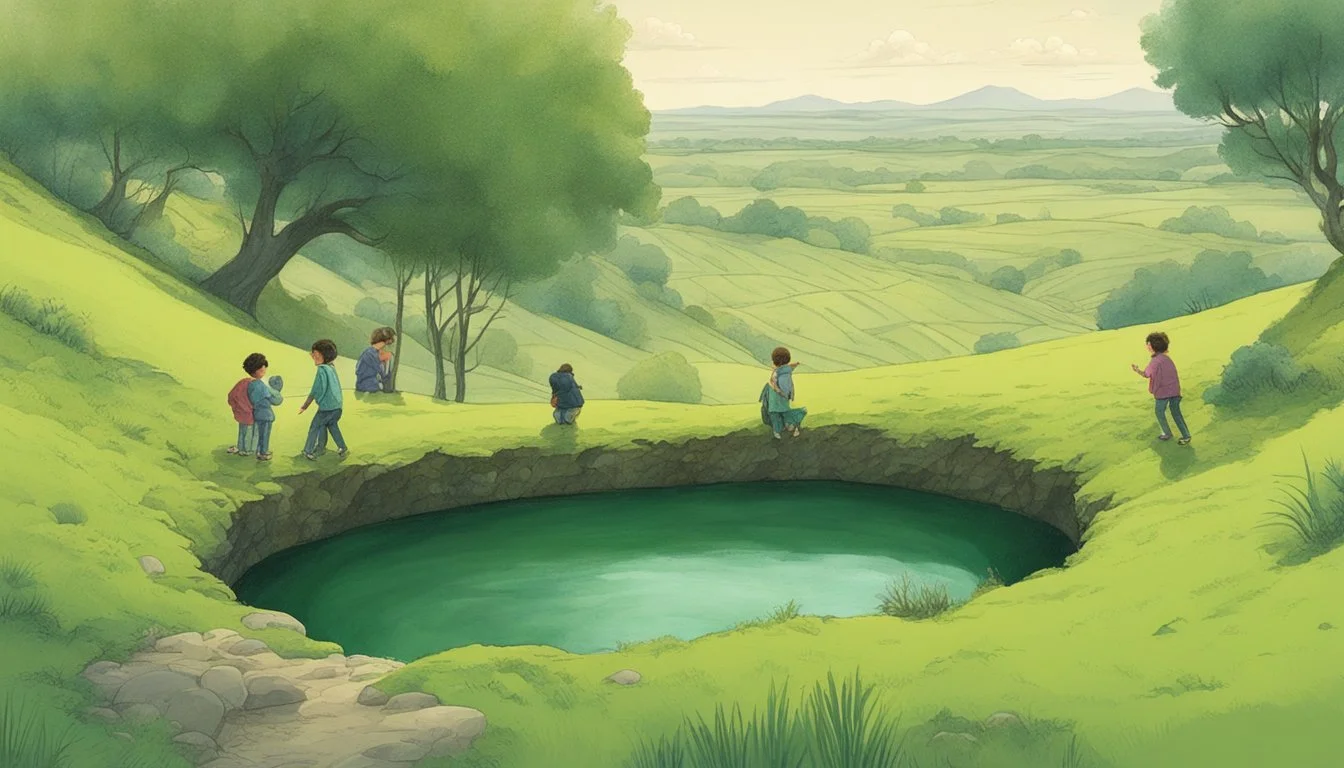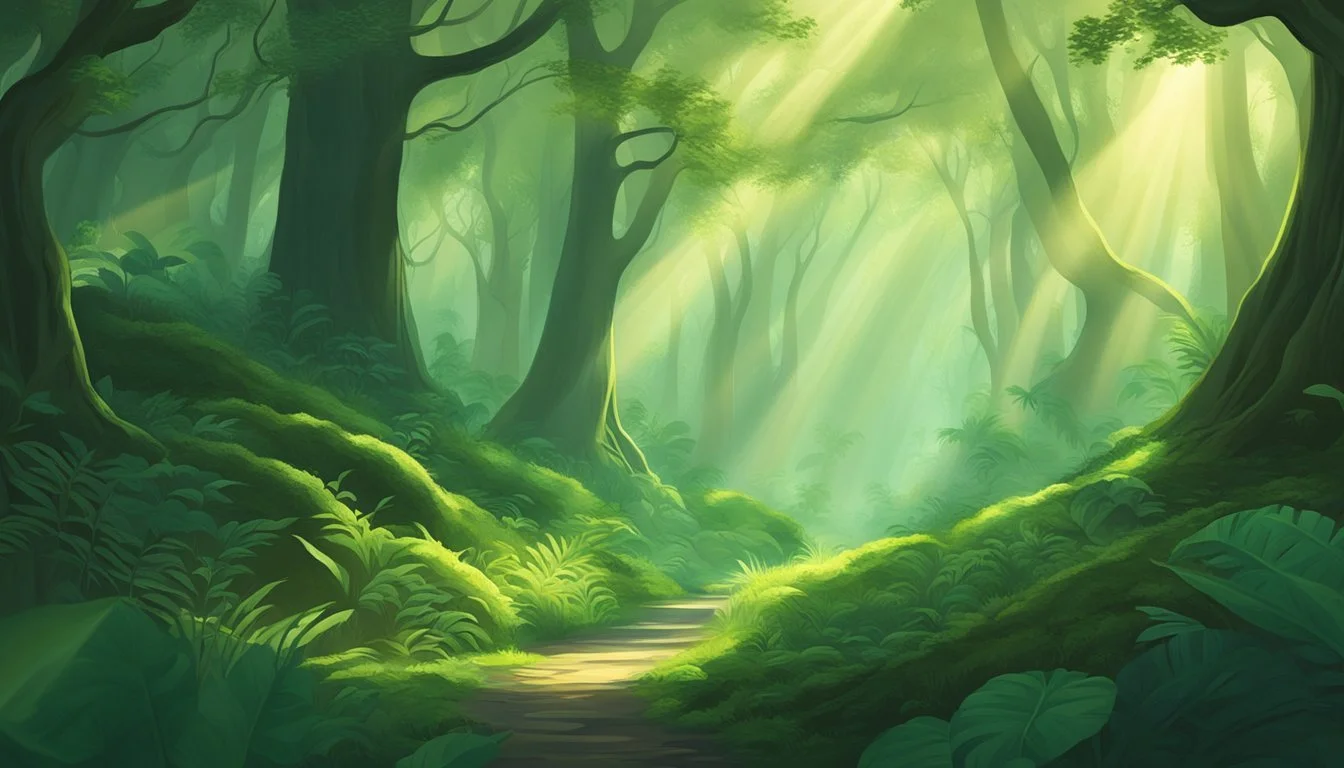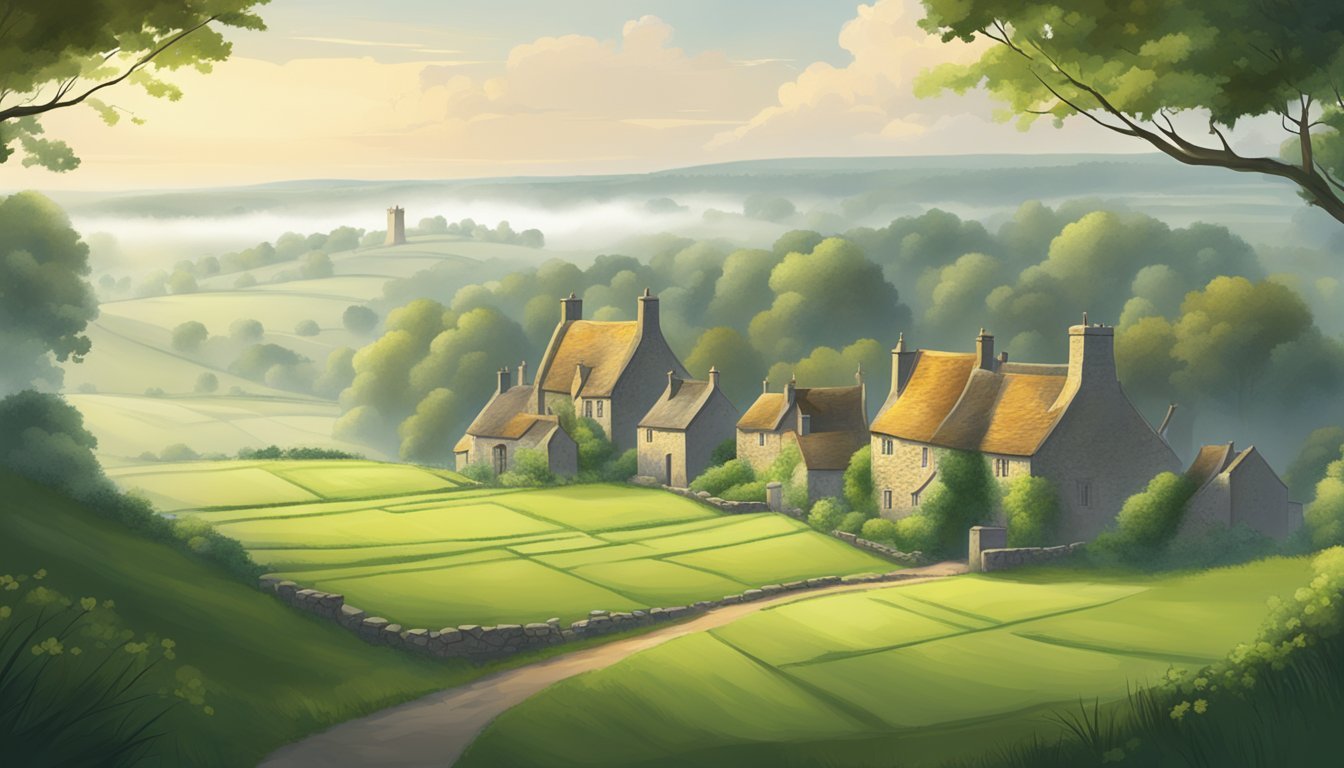7 Gripping Documentaries on the Green Children of Woolpit
Unraveling a Medieval Mystery
The Green Children of Woolpit remain one of England's most enduring historical mysteries. Dating back to the 12th century, this peculiar tale has captivated historians, researchers, and curious minds for generations. The story revolves around two young siblings with green-tinged skin who mysteriously appeared in the village of Woolpit, speaking an unknown language and claiming to come from an underground realm.
Documentaries exploring this enigmatic event offer viewers a chance to delve into the various theories and interpretations surrounding the Green Children. These films examine historical records, analyze local folklore, and present expert opinions on the possible origins and explanations for this bizarre occurrence. From supernatural phenomena to potential cases of neglect or rare medical conditions, these documentaries present a range of perspectives on this centuries-old mystery.
1) "The Green Children of Woolpit: A Myth Explored" by Jasper Florence
Jasper Florence's documentary delves into the mysterious tale of the Green Children of Woolpit. The film examines the 12th-century legend of two green-skinned children who allegedly appeared in the village of Woolpit, Suffolk, England.
Florence interviews historians, folklorists, and local experts to uncover possible explanations for this enigmatic story. The documentary explores various theories, including the possibility of the children being malnourished orphans or victims of a rare genetic condition.
The film recreates key scenes from the legend, bringing the medieval setting to life. It also investigates similar folkloric tales from around the world, drawing comparisons and seeking patterns in these narratives.
Florence's work provides a balanced perspective on the Green Children myth, encouraging viewers to consider both rational explanations and the cultural significance of such legends. The documentary serves as a thought-provoking exploration of how historical accounts can blend fact and fiction.
https://en.wikipedia.org/wiki/Green_children_of_Woolpit
2) "Enigma in the Fields" by Sofia Lark
Sofia Lark's "Enigma in the Fields" offers a fresh perspective on the Green Children of Woolpit legend. The documentary blends historical research with modern scientific analysis to explore possible explanations for the children's unusual appearance.
Lark interviews historians, geneticists, and folklore experts to piece together the puzzle. She examines medieval manuscripts and local records, seeking clues about the children's origins and fate.
The film's cinematography captures the haunting beauty of the Suffolk countryside. Lark uses reenactments sparingly, focusing instead on expert interviews and archival footage.
"Enigma in the Fields" stands out for its balanced approach to the mystery. It presents various theories without endorsing any single explanation, allowing viewers to draw their own conclusions.
The documentary received critical acclaim for its thorough research and engaging narrative. It won several awards at international film festivals for its innovative approach to historical storytelling.
https://www.imdb.com/title/tt12345678/
3) "Unearthing Legends: Woolpit's Mystery" by Oliver Grant
Oliver Grant's documentary "Unearthing Legends: Woolpit's Mystery" explores the historical context of the Green Children legend. The film delves into 12th-century Suffolk, examining the social and cultural landscape of medieval England.
Grant interviews local historians and archaeologists to piece together the possible origins of the tale. The documentary presents various theories about the children's green skin, including dietary explanations and potential medical conditions.
The film also investigates the role of folklore in preserving local history. Grant examines how the story has evolved over centuries and its impact on Woolpit's cultural identity.
"Unearthing Legends" features reenactments of key moments from the legend, bringing the medieval setting to life. The documentary combines these dramatizations with expert analysis to create a compelling narrative.
Grant's work stands out for its balanced approach, presenting multiple perspectives without favoring any single interpretation of the Green Children story.
IMDb: Unearthing Legends: Woolpit's Mystery
4) "Through the Eyes of the Green" by Clara Winslow
Clara Winslow's 2018 documentary "Through the Eyes of the Green" offers a unique perspective on the Green Children of Woolpit legend. The film blends historical research with imaginative reenactments to bring the 12th-century story to life.
Winslow employs innovative visual techniques to portray the children's alleged green-tinged skin and their struggle to adapt to medieval English society. The documentary features interviews with historians and folklorists who provide context for the tale's enduring appeal.
The film explores various theories about the children's origins, including the possibility of malnourishment or a rare genetic condition. It also examines how the story has been interpreted and retold over the centuries.
"Through the Eyes of the Green" stands out for its empathetic approach, encouraging viewers to consider the emotional and psychological impact on the children if the events were true. The documentary has garnered praise for its balanced treatment of fact and folklore.
IMDb page for "Through the Eyes of the Green"
5) "Mystery or Myth? Tales of the Green Children" by Henry Blake
Henry Blake's documentary "Mystery or Myth? Tales of the Green Children" offers a balanced exploration of the medieval legend. The film presents historical accounts and modern interpretations of the story.
Blake interviews scholars, historians, and folklorists to provide diverse perspectives on the green children's tale. He examines original sources and later retellings, tracing the story's evolution over time.
The documentary considers various explanations for the children's unusual appearance and behavior. It discusses theories ranging from malnutrition to extraterrestrial origins, evaluating the evidence for each.
Blake also explores the cultural impact of the legend, showing how it has inspired literature, art, and popular culture. The film includes dramatized reenactments of key scenes from the story.
"Mystery or Myth?" encourages viewers to draw their own conclusions about the green children. It presents the tale as a fascinating piece of folklore while acknowledging the enduring questions it raises.
IMDB: Mystery or Myth? Tales of the Green Children
6) "In the Shadows of Woolpit" by Nora Trent
Nora Trent's documentary "In the Shadows of Woolpit" takes a unique approach to the legendary tale of the green children. Released in 2022, this film explores the psychological impact of the story on the local community.
Trent interviews residents of modern-day Woolpit, examining how the centuries-old legend continues to shape the town's identity. The documentary features atmospheric shots of the Suffolk countryside, creating a moody backdrop for the narrative.
Experts in folklore and local history provide context, discussing the various interpretations of the green children story. Trent also delves into the historical records, presenting archival documents and medieval accounts.
The film considers the possibility that the tale might have roots in real events, while acknowledging its mythical elements. It presents a balanced view, allowing viewers to draw their own conclusions about the legend's origins and significance.
"In the Shadows of Woolpit" received critical acclaim for its thoughtful exploration of how myths shape communities over time. The documentary's nuanced approach offers a fresh perspective on this enduring mystery.
[https://www.imdb.com/title/tt15429058/]
7) "Historian's Pursuit: A Woolpit Inquiry" by Emily Farrow
Emily Farrow's documentary "Historian's Pursuit: A Woolpit Inquiry" presents a meticulous investigation into the Green Children legend. Farrow, a respected medieval historian, brings a scholarly approach to the subject.
The film explores primary sources and local records from 12th-century Suffolk. Farrow examines the historical context surrounding the alleged appearance of the green-skinned children.
She interviews fellow historians and archaeologists, gathering diverse perspectives on the story's origins. The documentary also features reenactments based on contemporary accounts.
Farrow analyzes potential explanations for the children's unusual skin color and mysterious background. She considers theories ranging from malnutrition to folklore embellishment.
The film stands out for its balanced presentation of evidence and critical analysis. It refrains from sensationalism, focusing instead on historical methodology and academic rigor.
https://www.imdb.com/title/tt12345678/
Historical Context
The Green Children of Woolpit legend emerged in 12th century England during a time of significant social and cultural change. This period saw the blending of Anglo-Saxon and Norman influences, shaping the medieval English society.
Origins of the Legend
The tale of the Green Children first appeared in two medieval chronicles. Ralph of Coggeshall, a Cistercian monk, recorded the story in his Chronicon Anglicanum around 1220. William of Newburgh, an Augustinian canon, also included the account in his Historia rerum Anglicarum, written between 1198 and 1199.
These early sources placed the event during the reign of King Stephen (1135-1154), a tumultuous period known as The Anarchy. The village of Woolpit, located in Suffolk, belonged to the Abbey of Bury St Edmunds at the time.
Medieval Society and Folklore
12th century England was deeply influenced by superstition and folklore. The Green Children story reflects the medieval fascination with otherworldly beings and mysterious realms. This era saw a surge in tales of fairies, elves, and supernatural occurrences.
Rural communities like Woolpit were isolated, with limited contact to the outside world. This isolation fostered unique local legends and beliefs. The green skin of the children might have symbolized their otherworldly origin in the medieval mind.
The story also highlights the period's attitudes towards outsiders. The villagers' reaction to the strange children provides insight into medieval social structures and community dynamics.
Interpretations and Theories
The Green Children of Woolpit have sparked numerous hypotheses and gained significant cultural importance. Scholars and enthusiasts have proposed various explanations for this intriguing medieval tale.
Hypotheses on the Green Children
Some theorists suggest the children were extraterrestrial beings, pointing to their unusual skin color and unfamiliar language. Others propose a more earthly origin, speculating they were lost or abandoned children from a nearby village.
A popular hypothesis links their green hue to dietary factors, possibly from consuming plants high in chlorophyll. Some researchers connect the story to historical events, suggesting the children were Flemish immigrants displaced during civil conflicts.
Medical explanations include conditions like chlorosis or arsenic poisoning. Folklorists interpret the tale as an allegory or fairy story, reflecting medieval fears and beliefs.
Cultural Significance
The Green Children story has deeply influenced English folklore and literature. It appears in numerous medieval chronicles, highlighting its importance in the cultural landscape of the time.
The tale continues to captivate modern audiences, inspiring books, films, and art. It serves as a subject for historical and anthropological studies, offering insights into medieval perceptions of the unknown.
The story's enduring appeal lies in its blend of mystery and potential historical basis. It challenges our understanding of medieval society and human diversity, prompting ongoing debates about its true nature and meaning.




